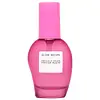What's inside
What's inside
 Key Ingredients
Key Ingredients

 Benefits
Benefits

 Concerns
Concerns

No concerns
 Ingredients Side-by-side
Ingredients Side-by-side

Water
Skin ConditioningGlycerin
HumectantButylene Glycol
HumectantPropanediol
SolventNeopentyl Glycol Diheptanoate
EmollientEthylhexyl Olivate
Skin ConditioningC9-12 Alkane
SolventMica
Cosmetic ColorantSaccharide Isomerate
HumectantPolyglutamic Acid
Skin ConditioningCoco-Caprylate/Caprate
EmollientSqualane
EmollientDipalmitoyl Hydroxyproline
Skin ConditioningHydrolyzed Sodium Hyaluronate
Skin ConditioningAllantoin
Skin ConditioningGlyceryl Acrylate/Acrylic Acid Copolymer
HumectantPanax Ginseng Root Extract
EmollientSodium Acetylated Hyaluronate
HumectantSorbitan Sesquiisostearate
EmulsifyingSodium Hyaluronate
HumectantSodium Polyacryloyldimethyl Taurate
Emulsion StabilisingSodium Hyaluronate Crosspolymer
HumectantAlanine
MaskingArginine
MaskingGlycine
BufferingHistidine
HumectantIsoleucine
Skin ConditioningPhenylalanine
MaskingProline
Skin ConditioningSerine
MaskingThreonine
Valine
MaskingSclerocarya Birrea Seed Oil
HumectantTremella Fuciformis Sporocarp Extract
AntioxidantAspartic Acid
MaskingPCA
HumectantAvena Sativa Kernel Oil
Skin ConditioningSodium Carrageenan
Emulsion StabilisingPalmitic Acid
EmollientSodium Lactate
BufferingSodium PCA
HumectantPentylene Glycol
Skin ConditioningSorbeth-30 Tetraisostearate
EmulsifyingDipropylene Glycol
HumectantPanthenol
Skin ConditioningSea Salt
AbrasiveSodium Citrate
BufferingSodium Metabisulfite
AntioxidantPPG-8-Ceteth-20
EmulsifyingAcrylates/Beheneth-25 Methacrylate Copolymer
Citric Acid
BufferingTetrasodium Glutamate Diacetate
Phenoxyethanol
PreservativeXanthan Gum
EmulsifyingTocopheryl Acetate
AntioxidantSodium Hydroxide
BufferingEthylhexylglycerin
Skin ConditioningCI 77491
Cosmetic ColorantCI 77891
Cosmetic ColorantWater, Glycerin, Butylene Glycol, Propanediol, Neopentyl Glycol Diheptanoate, Ethylhexyl Olivate, C9-12 Alkane, Mica, Saccharide Isomerate, Polyglutamic Acid, Coco-Caprylate/Caprate, Squalane, Dipalmitoyl Hydroxyproline, Hydrolyzed Sodium Hyaluronate, Allantoin, Glyceryl Acrylate/Acrylic Acid Copolymer, Panax Ginseng Root Extract, Sodium Acetylated Hyaluronate, Sorbitan Sesquiisostearate, Sodium Hyaluronate, Sodium Polyacryloyldimethyl Taurate, Sodium Hyaluronate Crosspolymer, Alanine, Arginine, Glycine, Histidine, Isoleucine, Phenylalanine, Proline, Serine, Threonine, Valine, Sclerocarya Birrea Seed Oil, Tremella Fuciformis Sporocarp Extract, Aspartic Acid, PCA, Avena Sativa Kernel Oil, Sodium Carrageenan, Palmitic Acid, Sodium Lactate, Sodium PCA, Pentylene Glycol, Sorbeth-30 Tetraisostearate, Dipropylene Glycol, Panthenol, Sea Salt, Sodium Citrate, Sodium Metabisulfite, PPG-8-Ceteth-20, Acrylates/Beheneth-25 Methacrylate Copolymer, Citric Acid, Tetrasodium Glutamate Diacetate, Phenoxyethanol, Xanthan Gum, Tocopheryl Acetate, Sodium Hydroxide, Ethylhexylglycerin, CI 77491, CI 77891
Opuntia Ficus-Indica Stem Extract
Skin ConditioningPropanediol
SolventButylene Glycol
HumectantWater
Skin ConditioningBetaine
HumectantOpuntia Ficus-Indica Fruit Extract
Skin ConditioningPalmitoyl Tripeptide-1
Skin ConditioningEctoin
Skin ConditioningSodium Hyaluronate
HumectantGlycerin
HumectantUbiquinone
AntioxidantGalactomyces Ferment Filtrate
HumectantBifida Ferment Filtrate
Skin ConditioningSpilanthes Acmella Flower/Leaf/Stem Extract
AntimicrobialCarthamus Tinctorius Seed Oil
MaskingGlycyrrhiza Glabra Root Extract
BleachingChamaecyparis Obtusa Leaf Extract
Skin ConditioningAmmonium Acryloyldimethyltaurate/Vp Copolymer
Paeonia Suffruticosa Root Extract
Skin ProtectingAstragalus Membranaceus Root Extract
EmollientScutellaria Baicalensis Root Extract
AstringentPEG-40 Hydrogenated Castor Oil
Emulsifying1,2-Hexanediol
Skin ConditioningPPG-26-Buteth-26
Skin ConditioningCaprylyl Glycol
EmollientTocopherol
AntioxidantOpuntia Ficus-Indica Stem Extract, Propanediol, Butylene Glycol, Water, Betaine, Opuntia Ficus-Indica Fruit Extract, Palmitoyl Tripeptide-1, Ectoin, Sodium Hyaluronate, Glycerin, Ubiquinone, Galactomyces Ferment Filtrate, Bifida Ferment Filtrate, Spilanthes Acmella Flower/Leaf/Stem Extract, Carthamus Tinctorius Seed Oil, Glycyrrhiza Glabra Root Extract, Chamaecyparis Obtusa Leaf Extract, Ammonium Acryloyldimethyltaurate/Vp Copolymer, Paeonia Suffruticosa Root Extract, Astragalus Membranaceus Root Extract, Scutellaria Baicalensis Root Extract, PEG-40 Hydrogenated Castor Oil, 1,2-Hexanediol, PPG-26-Buteth-26, Caprylyl Glycol, Tocopherol
Ingredients Explained
These ingredients are found in both products.
Ingredients higher up in an ingredient list are typically present in a larger amount.
Butylene Glycol (or BG) is used within cosmetic products for a few different reasons:
Overall, Butylene Glycol is a safe and well-rounded ingredient that works well with other ingredients.
Though this ingredient works well with most skin types, some people with sensitive skin may experience a reaction such as allergic rashes, closed comedones, or itchiness.
Learn more about Butylene GlycolGlycerin is already naturally found in your skin. It helps moisturize and protect your skin.
A study from 2016 found glycerin to be more effective as a humectant than AHAs and hyaluronic acid.
As a humectant, it helps the skin stay hydrated by pulling moisture to your skin. The low molecular weight of glycerin allows it to pull moisture into the deeper layers of your skin.
Hydrated skin improves your skin barrier; Your skin barrier helps protect against irritants and bacteria.
Glycerin has also been found to have antimicrobial and antiviral properties. Due to these properties, glycerin is often used in wound and burn treatments.
In cosmetics, glycerin is usually derived from plants such as soybean or palm. However, it can also be sourced from animals, such as tallow or animal fat.
This ingredient is organic, colorless, odorless, and non-toxic.
Glycerin is the name for this ingredient in American English. British English uses Glycerol/Glycerine.
Learn more about GlycerinPropanediol is an all-star ingredient. It softens, hydrates, and smooths the skin.
It’s often used to:
Propanediol is not likely to cause sensitivity and considered safe to use. It is derived from corn or petroleum with a clear color and no scent.
Learn more about PropanediolSodium Hyaluronate is hyaluronic acid's salt form. It is commonly derived from the sodium salt of hyaluronic acid.
Like hyaluronic acid, it is great at holding water and acts as a humectant. This makes it a great skin hydrating ingredient.
Sodium Hyaluronate is naturally occurring in our bodies and is mostly found in eye fluid and joints.
These are some other common types of Hyaluronic Acid:
Learn more about Sodium HyaluronateWater. It's the most common cosmetic ingredient of all. You'll usually see it at the top of ingredient lists, meaning that it makes up the largest part of the product.
So why is it so popular? Water most often acts as a solvent - this means that it helps dissolve other ingredients into the formulation.
You'll also recognize water as that liquid we all need to stay alive. If you see this, drink a glass of water. Stay hydrated!
Learn more about Water